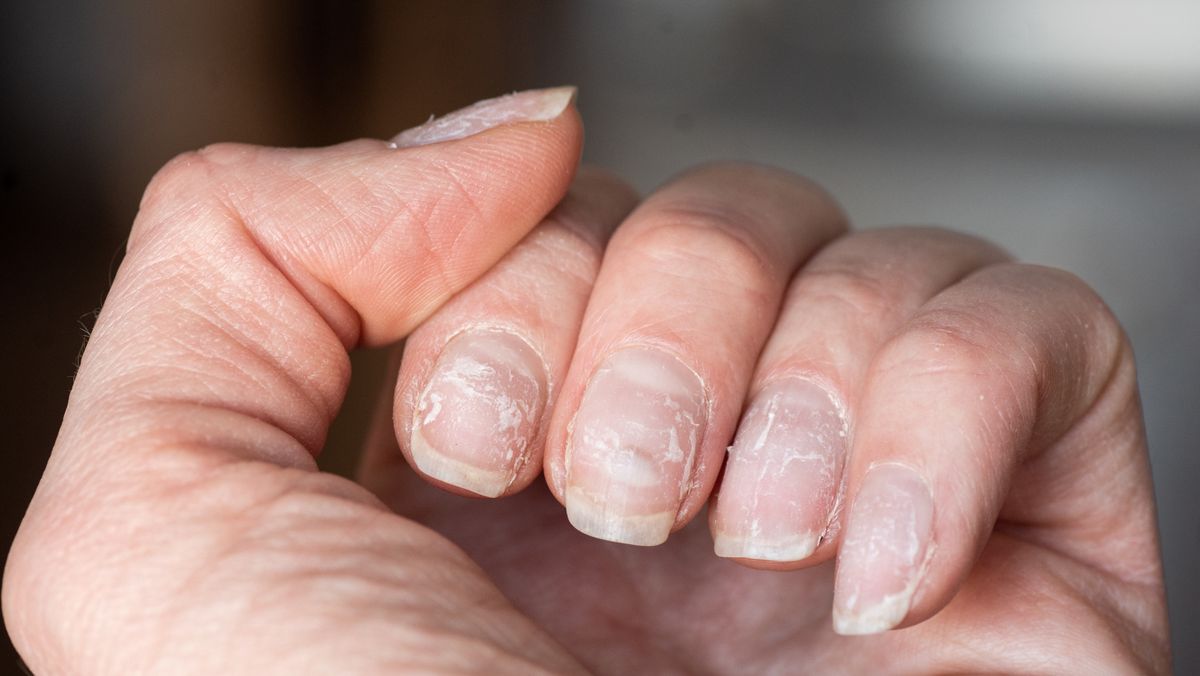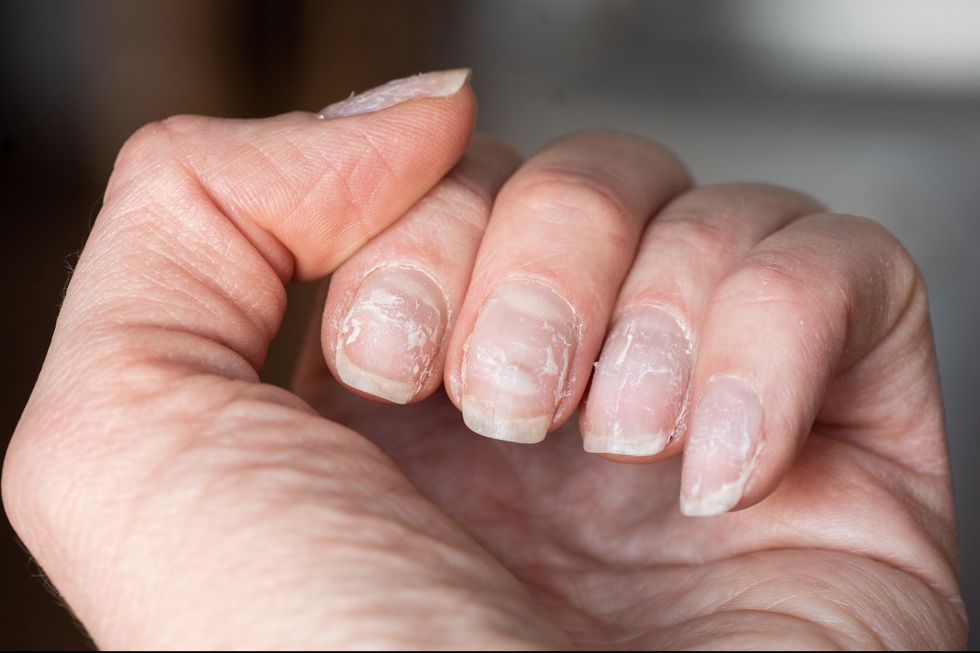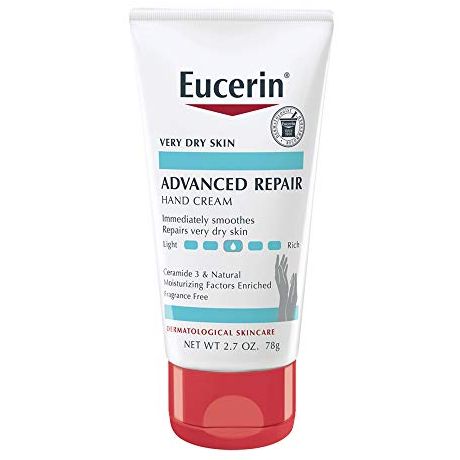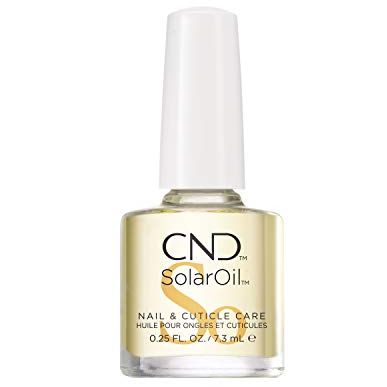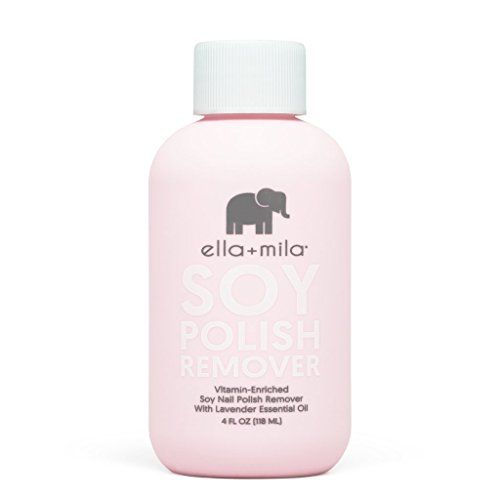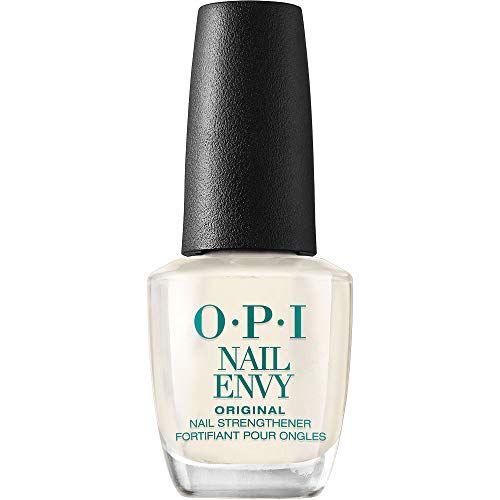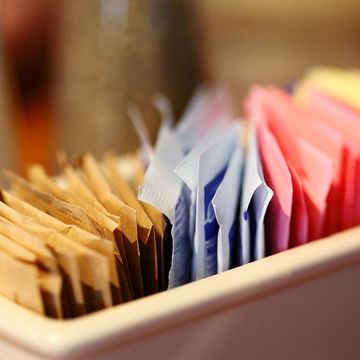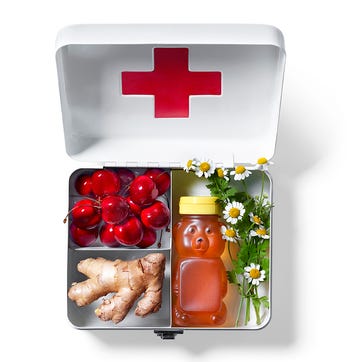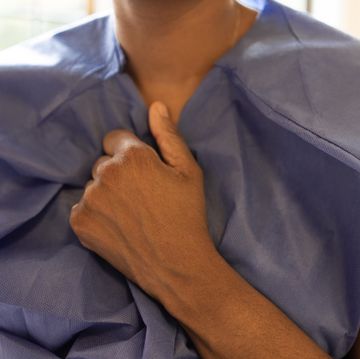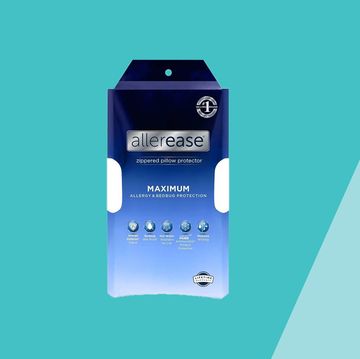Fingernails aren’t just a canvas for your manicurist’s colorful artwork—they are also tiny windows into the state of your overall health. So, the next time the polish comes off, make sure to take a close look at your nails’ condition. Any changes—like peeling nails, yellow nails, or fingernail ridges—are worth noting and investigating further.
Meet the Experts: Shirin Peters, M.D., founder of Bethany Medical Clinic in New York City, Blair Murphy-Rose M.D., F.A.A.D., board-certified dermatologist and clinical instructor at New York-Presbyterian Hospital Weill Cornell Medical Center, and Dana Stern, M.D., a New York City-based board-certified dermatologist and founder of Dr. Dana.
Here, experts help us understand specifically why nails peel and flake, like a snake shedding its skin. They also share what you can do to restore their health and prevent future breakage.
What causes peeling nails?
There are various potential causes behind your crocodile-feeling claws. Below are some of the most common.
1. Your hands are frequently wet.
“The most common cause [of peeling nails] is repetitive wetting or drying of hands,” says Blair Murphy-Rose M.D., F.A.A.D., board-certified dermatologist and clinical instructor at New York-Presbyterian Hospital Weill Cornell Medical Center. “So it happens often with hairdressers, house cleaners, and other jobs requiring frequent soaking of hands.”
Your nails may also peel if you spend time in hot or humid places. “Too much moisture or prolonged exposure to moisture causes the nail to swell with water and become soft,” explains Dr. Peters. “The end result is a soft and brittle nail that is susceptible to damage from minimal trauma.”
Treatment: To prevent this from happening, Dr. Peters recommends wearing gloves when doing the dishes, drying your hands and nails thoroughly after washing them, and regularly applying a hand cream that contains vitamin E to replenish any moisture that is lost.
2. You buffed your nails too much.
Just as moisture-laden nails can be prone to peeling and splitting, so can nails that are dried out from too much buffing, according to Dr. Peters. “Excessive dryness causes the nail to become brittle so minor trauma easily damages the nail,” she explains. That means a small nick can turn into a big split when nails are too dry.
Treatment: Be sure to use a rich moisturizer or nail oil after buffing your nails to keep them from drying out, suggests Dr. Rose.
3. The chemicals in your products are too harsh.
Certain chemicals (like those needed for adhesive for gel or acrylic nails) and ingredients found in everything from hand soap and sanitizers to laundry detergent can dry out nails and make them prone to peeling, says Dr. Peters.
Treatment: She recommends looking for products labeled “hypoallergenic” because they typically contain milder or natural chemical agents. If you’re not sure where to start, she likes these options: Aveeno Skin Relief, Cetaphil Ultra Gentle Wash, or Dove Sensitive Skin bath care products; Seventh Generation dish soap; and Arm & Hammer Sensitive Skin Free & Clear laundry detergent.
4. You’ve experienced nail trauma.
Picking at polish, biting your nails, or using your nails to open a can of seltzer might not sound very traumatic, but activities like this really can cause nails to start peeling.
“While the exact mechanism is not entirely understood, generally speaking, nail peeling occurs when cell-to-cell adhesion is disrupted,” says Dr. Rose. “Our nails are made of many layers of compacted cells. The connection between one cell and other adjacent cells can be compromised as the bonds between them loosen. This is what occurs when the nail peels. The cell-to-cell adhesion breaks down and the layers separate.”
Treatment: To prevent that separation from happening, Dr. Rose recommends applying a nail strengthener like Ella+Mila First Aid Kiss Nail Strengthener or OPI Nail Envy Nail Strengthener—and be sure to use a gentle, acetone-free nail polish remover instead of picking polish off bit by bit.
5. A nutrient deficiency could be playing a role.
“Peeling nails have been associated with low calcium, as well as a deficiency in iron, vitamin D, and B vitamins like biotin,” says Dr. Peters. “These vitamins all help keratin—what the tissue nails are made of—grow stronger.”
Treatment: Eating a well-balanced diet rich in fruits, vegetables, and lean proteins is a good place to start addressing nutritional deficiencies, but you might also want to ask your doctor if you could benefit from taking certain supplements.
6. A thyroid issue might be to blame.
While typical signs of a thyroid problem include weight changes, anxiety, fatigue, and brain fog, peeling nails can also be a red flag. “Thyroid disease causes a slower turnover rate of the skin and nails so older nail tissue stays around for longer, causing nails to become brittle,” explains Dr. Peters.
Treatment: Make an appointment to have your thyroid levels checked. Your doctor can prescribe further treatment if needed.
7. You have a fungal infection.
“Onychomycosis, or fungal infection of the nail, can cause several different types of nail dystrophy including nail peeling,” says Dr. Rose. You may also experience thickening of the nails and white or yellow-brown discoloration, according to the Mayo Clinic.
Treatment: If you think you have a fungal infection, make an appointment with your dermatologist, as they can be tricky to treat. Your doc can confirm that you have an infection and will likely prescribe oral antifungal meds to help the nail heal.
8. You have hand eczema.
Sometimes certain skin conditions like eczema can trigger nail peeling. Eczema can manifest in different parts of the body including the hands. Hands can become dry and flaky with red inflamed areas that are prone to cracks and fissures causing intense itching and burning. “If inflammation surrounds the nail, this can impact normal nail growth and appearance and nails can grow with irregularities including a tendency to peel,” says Dana Stern, M.D., a New York City-based board-certified dermatologist and founder of Dr. Dana.
Treatment: Manage eczema symptoms by keeping the skin on the hands hydrated with your favorite moisturizer, and stay on top of your regular dermatologist appointments.
9. You need to exfoliate.
When skin feels dry we tend to reach for a body scrub to slough off any flakiness. The same intention applies to nails. “The nail is composed of layers of dead nail cells so to a certain degree, nail peeling happens due to a lack of exfoliation,” says Dr. Stern.
Treatment: Using an alpha hydroxy acid (AHA) like glycolic acid, which has been shown to help rejuvenate nails, can help jumpstart exfoliation.
How to prevent peeling nails
Simply put, keeping your nails cared for and moisturized is the best way to prevent peeling nails. “Giving your hands and nails some TLC might do the trick but if not, visit your primary care doctor or dermatologist for guidance,” says Shirin Peters, M.D., founder of Bethany Medical Clinic in New York City. “Your dermatologist will ask questions about possible causes or exposures and any medical conditions or medications that could play a role.” They may also take a clipping of your nail and send it to a dermatopathologist to be examined under a microscope to get a better idea of what’s going on.
When to see a doctor
Peeling nails is common and shouldn’t typically be a reason to worry. With time, depending on the severity of the peeling as well as the cause and the efficacy of treatment, symptoms should subside. Usually, there is no internal cause, but if peeling is simply not healing or comes on suddenly in someone who always has great, healthy nails, see your dermatologist or primary care physician to explore possible causes like thyroid disease or anemia, says Dr. Stern. Bloodwork and a thorough examination can help paint a clearer picture of what may be going on.
Kaitlyn Phoenix is a deputy editor in the Hearst Health Newsroom, where she reports, writes and edits research-backed health content for Good Housekeeping, Prevention and Woman's Day. She has more than 10 years of experience talking to top medical professionals and poring over studies to figure out the science of how our bodies work. Beyond that, Kaitlyn turns what she learns into engaging and easy-to-read stories about medical conditions, nutrition, exercise, sleep and mental health. She also holds a B.S. in magazine journalism from Syracuse University.
Ardenis Perez is a New York City-based writer, editor, and blogger who is super passionate about the beauty space. Before going freelance, Ardenis worked as an associate editor at Family Circle where she wrote about pets, teens, family, and beauty.
